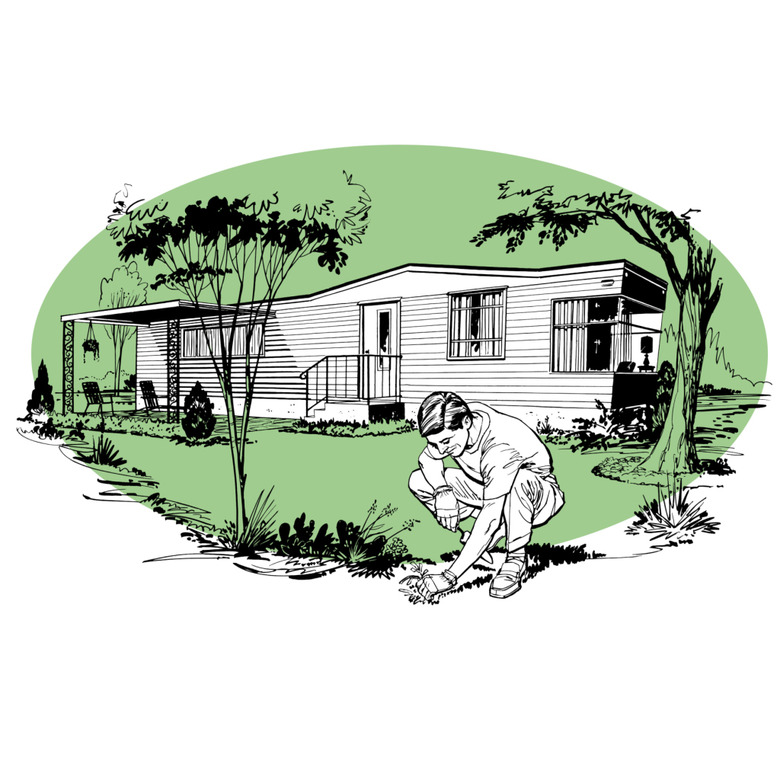How To Block, Brace And Tie Down A Mobile Home
Things Needed
-
6 mil black plastic sheeting
-
4-by-16-by-16 inch wood forms
-
Concrete mix
-
Trowel
-
2-by-4 lumber
-
Wheelbarrow
-
8-by-8-by-16 inch cement blocks
-
Hydraulic jacks
-
Carpenter's level
-
Tie-down cables or frame anchors
-
Screwdrivers
Tip
The type of tie-down your mobile home requires is determined by the type of soil in your area. Consult with a local building inspector to determine the type of equipment and methods recommended for your specific location.
Simply securing the mobile home on a concrete slab is not the recommended method because of normal frost and thaw heaving that occurs in the ground in many areas of the country.
Warning
Before installing tie-down or other bracing equipment for your mobile home, locate the utility lines and cables on your property to avoid outages and potential hazards.
Mobile homes, also called manufactured homes, provide inexpensive and comfortable housing for people on limited or fixed incomes. Today's mobile homes contain the same utilities and amenities of traditional housing but in a more compact system. Newer models of manufactured homes are much stronger than older models and may have tie-down and bracing systems built into their structures. Local building codes can vary on the requirements for blocking, bracing and tying down mobile homes. Research your local building codes thoroughly before proceeding.
Step 1
Remove all debris from the area where the mobile home will be secured.
Step 2
Lay a 6 mil black plastic sheet under the mobile home to control moisture seepage.
Step 3
Pour concrete slabs to act as footers for the blocks. Build 4-by-16-by-16 inch wooden forms for the concrete. Mix the concrete with water and pour it into the forms. Smooth the surfaces with a trowel then run a length of 2-by-4 lumber over the concrete to finish it off. The concrete slabs should be placed at 8- to 10-foot intervals. Allow the concrete to cure per the manufacturer's instructions.
Step 4
Set 8-by-8-by-16 inch concrete blocks on the slab to act as a pier under the mobile home. Double-stacking blocks is allowed in some communities if the stacks are no more than 5 blocks in height. Each row should be stacked at right angles to the abutting row of blocks.
Step 5
Use hydraulic jacks to set the rails of the mobile home onto the concrete blocks and ensure that the bottom rails of the unit rest on the pier surface.
Step 6
Go inside the mobile home and use a carpenter's level to verify that the structure sits evenly on the pier system. Adjust the position of the home on the blocks at both ends and all four corners if necessary.
Step 7
Install tie-down cables over the top of the home. The cables need to cross over the roof rafters for added strength. Run the cables over the roof protectors mounted on the roof edges; if there are no roof protectors present, they can be purchased with the tie-down cables. Ensure that the cables do not cover a window or door. Some models of mobile homes may have frame anchors or straps that hang from the bottom of the unit instead of over-the-top cables.
Step 8
Attach the straps and cables to the ground turnbuckle. With some types of anchors they must be screwed into the ground. Adjust the tension on the anchor points by alternating one side with the other for an even attachment.
